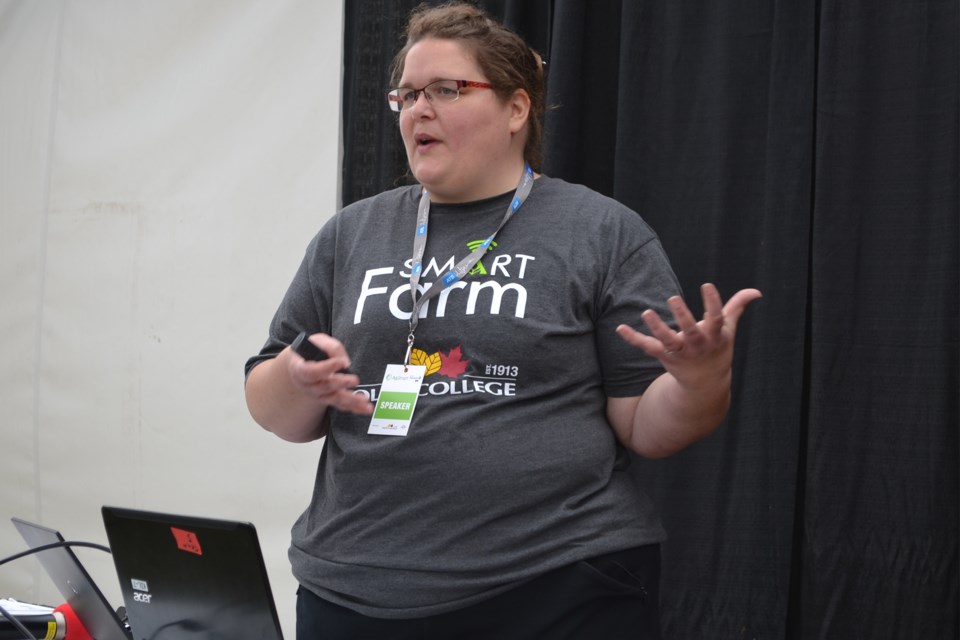OLDS — Canadian farmers and ranchers could help Canada cut its greenhouse gas footprint and emissions by about a quarter over the next few decades, an Olds College researcher says.
Joy Agnew, the college’s associate vice-president of applied research, gave that assessment during AgSmart, the Olds College’s outdoor agricultural technology show, held Aug. 10-11 on campus.
“That’s not bad for an industry that’s responsible for 10 per cent of the emissions,” she said.
But it won’t be easy, Agnew said, because the interplay between agriculture and the environment is immensely complex.
In total, Canada currently spews about 740 megatonnes of carbon dioxide (CO2) equivalents per year.
"Equivalents” include three main greenhouse gases: carbon dioxide, methane and nitrous oxide.
In the agricultural sector, CO2 is emitted by farm equipment burning fossil fuels such as oil and gas. Methane is typically emitted from livestock as it degrades. Nitrous oxide comes from the soil and from fertilizer used to spur the growth of crops.
All sectors of the economy are included in that annual equivalent; not only agriculture, but also oil and gas, mining and transportation.
The current national goal is to cut that figure down to around 400 megatonnes by 2030.
The ultimate goal is to reach net zero by 2050. That means the amount of carbon emitted minus the amount sequestered equals zero.
Agnew described those goals and the time anticipated to achieve them as "ambitious."
They would be achieved on the carbon emission side by cutting the amount of CO2 equivalents sent into the atmosphere and capturing the remainder from smokestacks.
A carbon tax also helps cut down on fossil fuel use by making oil and gas more expensive, thereby encouraging Canadians – including farmers and ranchers – to move to other forms of energy.
On the sequestration side, carbon is soaked up by plants and soil.
“We really need to be incentivizing and adopting practices that help on both sides: reducing emissions as well as boosting our sequestration,” Agnew said.
However, "developing quantification and verification protocols so that farmers can actually benefit from some sort of monetization of adopting these alternative practices or sequestering more carbon is going to be incredibly challenging,” she said.
“Basically it’s going to take a lot of time to develop these quantification protocols and time is something that we do not have.
“We need to figure this out quick.”
She said smart farms, like the one at Olds College could help, because they're all about cutting waste and cost via new technology.
"It's reducing fuel usage, reducing fertilizer usage, maximizing yields. The list goes on and on," she said.
At the same time, Agnew she said the costs and benefits of doing so need to be worked out carefully, because she said agriculture is an industry with “razor thin (profit) margins.”
"If these carbon taxes aren’t adopted globally, then Canadian ag will be at a global disadvantage,” she said.
There’s another issue too.
“We keep hearing more and more about us having to produce more food for a growing population.
“So how do we ensure that our requirement to reduce emissions, reduce our footprint, doesn’t conflict with our need to grow more food for a growing population,” Agnew asked.



